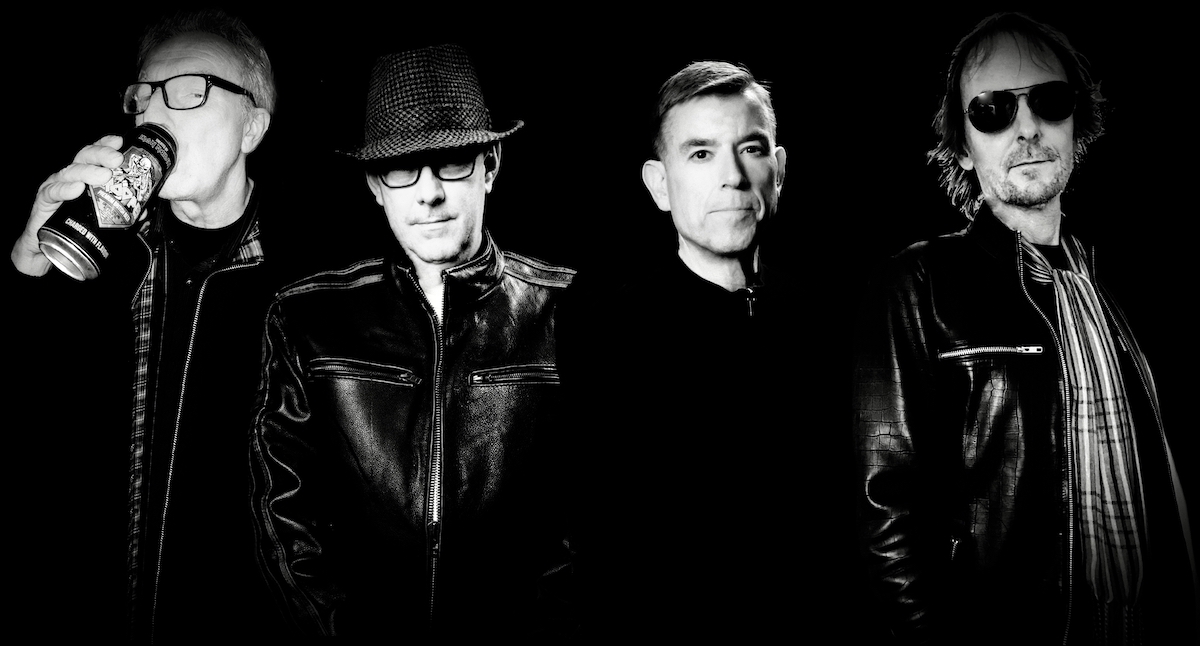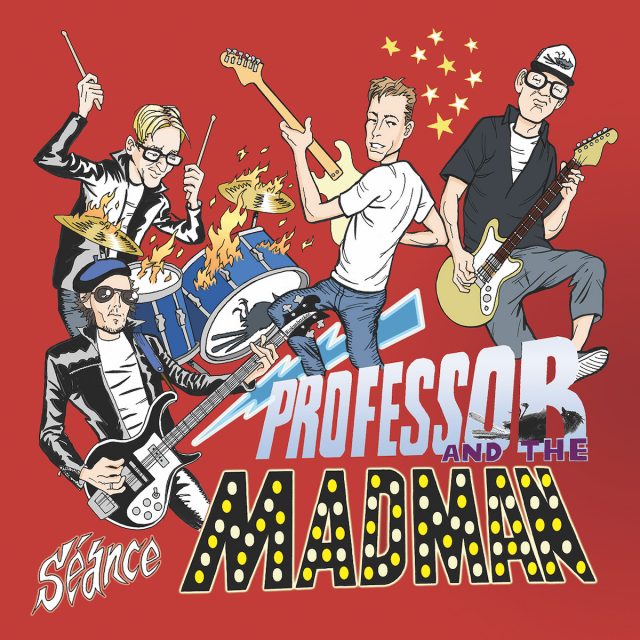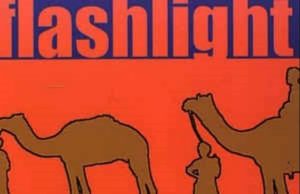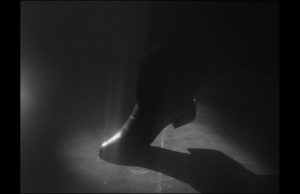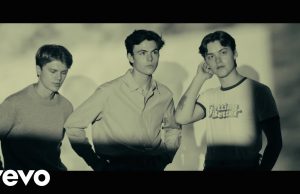THE EDITED PRESS RELEASE: “Professor and the Madman are vocalist/guitarist Alfie Agnew (Adolescents, D.I.), vocalist/guitarist Sean Elliott (D.I., Mind Over Four), bassist Paul Gray (The Damned, Eddie & the Hot Rods, U.F.O.), and drummer Rat Scabies (The Damned).
Co-produced by Elliott and Agnew, Séance’s dozen tracks are linked by thematic threads in a manner similar to the classic rock “concept albums” of the 1960s and 1970s. Elliott explains, “The overarching story concerns a group of friends who hold a séance in order to say one final farewell to friends who have passed. While in the supernatural fog they visit purgatory and hell. Ultimately, the nature of their reality gets a sobering check with a twist ending. Additional characters make appearances. All is not as it seems…”
The music that soundtracks the journey covers a kaleidoscopic array of rock styles. Throughout, Gray’s basslines often take the lead — wildly inventive and exploratory. On the album’s title track, Gray’s instrument provides dependable support as the story’s main cast of characters take their first tentative steps into the afterlife. Agnew and Elliott build a wall of guitar, and Scabies propels the six-minute epic forward with muscular rhythms and frantic drum fills.
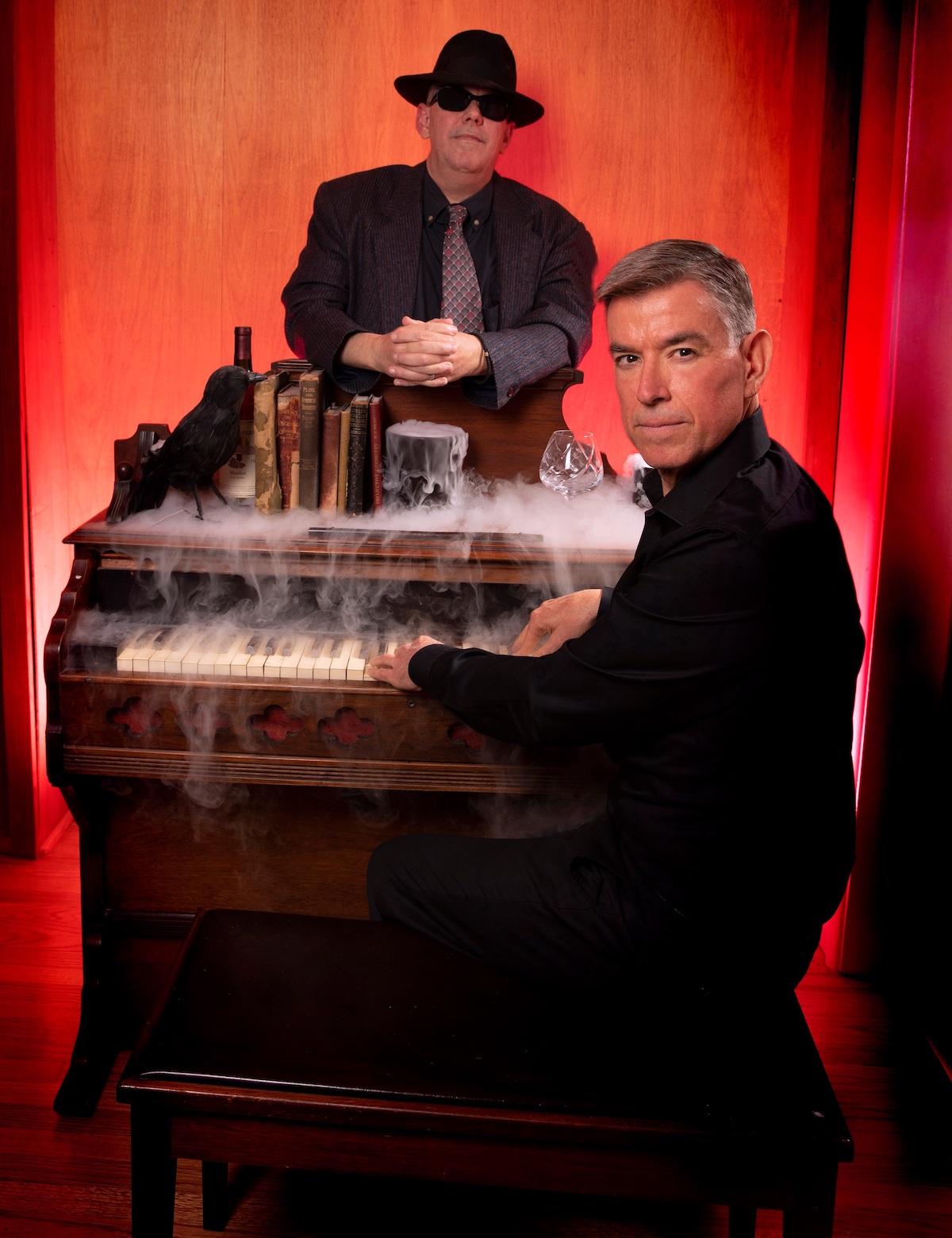
The Agnew-sung Time Machine recalls Brian Wilson and Weezer with its jaunty power pop bounce, while his The Council of Purgatory is a breezy stroll reminiscent of Harry Nilsson. Elliott’s Real Me finds the sweet spot linking Paisley Underground grooviness with Oasis sass. On Two Tickets to the Afterlife, Elliott pulls the rug from under fans’ expectations and delivers a high voltage shock rocker—“We’ve got thrills! We’ve got pills! We’ve got million dollar bills!” The album is bookended by All the Lonely Souls, a lysergic house of mirrors linking the world of the living to the realm of the dead. New World bids a final farewell, and poses a warning, amid gently-strummed acoustic guitars.
“The new material is definitely eclectic,” says Agnew. “It’s less punk-influenced than our previous three studio albums. The 1960s and ’70s musical influences are more pronounced. We’re big fans of The Kinks, The Beatles, Pink Floyd, David Bowie, Brian Wilson, Led Zeppelin, and, of course The Damned. Sean and I also had musical productions like Jesus Christ Superstar, Phantom of the Paradise, Tommy and Hair in mind when writing this album.”
The rhythm section of Gray and Scabies are certainly no strangers to ambitious song cycles, having previously shared songwriting and instrumental credits on The Damned’s The Black Album (1980), and Scabies being an integral contributor to that same group’s gothic rock epic Phantasmagoria (1985). “Alfie and Sean are talented songwriters,” says Scabies. “We’ve recorded four albums via file sharing and I’m always impressed by the high quality of the tunes they bring to me.” Gray concurs: “Those guys make absolutely honest music, the most exciting I’ve heard in eons, and chock-full of melodies. When I first heard them, my thoughts were ‘Damned meets Cheap Trick via The Kinks’ — that’s a pretty heady mixture!”
